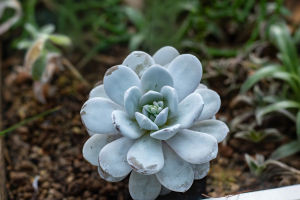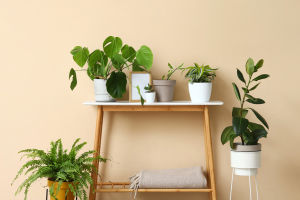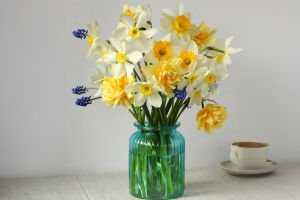Do you live in a city apartment with only a tiny balcony and dream of having your own green corner? You're not alone. Many people believe limited space means no garden.
But the truth is, with a little creativity and smart planning, even the smallest balcony can become a beautiful, functional green retreat.
In this article, we'll explore practical balcony gardening ideas for small spaces, offering inspiration and tips to help you bring nature into your home—no matter how compact your outdoor area may be.
Why Balcony Gardening Is Worth It
Balcony gardening isn't just about adding pretty plants—it's about creating a personal oasis. A green balcony can improve air quality, provide fresh herbs and vegetables, boost your mood, and make your home feel more alive. It's also an enjoyable hobby that helps reduce stress and encourages mindfulness.
And here's the best part: you don't need a large space or a big budget. All you need is a bit of sun, some containers, and your imagination.
Assess Your Balcony Space
Before you start planting, take a good look at your balcony. Measure the available floor space and observe how much sunlight it gets during the day. Most plants need at least 4–6 hours of sunlight, so knowing your balcony's exposure (north, south, east, or west) is essential.
Also, check for weight limits, water drainage options, and wind exposure—especially if you're planning to use hanging containers or large pots. Once you have a clear understanding of your balcony's conditions, you can make informed choices about plants and layout.
Choose the Right Containers
Container gardening is perfect for small balconies. Choose pots and planters of different sizes and shapes to maximize your space. Here are a few smart options:
• Vertical planters: These use wall space instead of floor space, perfect for herbs, succulents, or flowers.
• Hanging baskets: Ideal for trailing plants like ivy, petunias, or strawberries.
• Railing planters: These attach to the balcony railing and are great for small flowering plants or lettuce.
• Tiered plant stands: They let you stack multiple pots vertically, creating a layered green effect.
Remember to select containers with proper drainage to prevent root rot and keep your plants healthy.
Maximize Space with Smart Layouts
Small spaces demand smart layouts. Instead of placing pots randomly, think vertically and functionally:
• Use corners: Install corner shelves or stackable racks to take advantage of unused areas.
• Hang planters on walls: Create a living wall with herbs or colorful flowers.
• Use the ceiling: Hang macrame plant holders or baskets from the ceiling for an eye-catching display.
• Multi-use furniture: Use benches with built-in planters or foldable tables that double as potting stations.
Your goal should be to create layers—plants at different heights give the illusion of depth and abundance, even in small areas.
Grow Edible Plants
If you love cooking, turn your balcony into a mini edible garden. Many herbs, vegetables, and even fruits can thrive in containers. Consider growing:
• Herbs: Basil, mint, parsley, thyme, and chives are easy to grow and need little space.
• Leafy greens: Lettuce, arugula, and spinach grow quickly and don't require deep pots.
• Cherry tomatoes: These are compact and ideal for hanging baskets or tall planters.
• Chili peppers: They love sun and add color and spice to your garden.
Not only do edible plants look beautiful, but they also reduce grocery costs and add fresh flavor to your meals.
Add Color and Fragrance
Don't forget about flowers and aromatic plants! Adding color and scent makes your balcony more inviting. Try combinations like:
• Lavender: A calming scent and attractive purple flowers.
• Geraniums: Bright blooms that thrive in containers.
• Jasmine: A climbing plant with tiny fragrant flowers.
• Marigolds: Low maintenance and pest-repellent.
Mixing flowering plants with greenery enhances visual appeal and can even help attract pollinators like bees and butterflies—great for edible plants.
Use Recycled and DIY Ideas
You don't need to buy expensive gardening supplies. Look around your home for items you can reuse:
• Old crates or boxes can become rustic planters.
• Plastic bottles can be cut and hung as mini herb pots.
• Mason jars work well for growing small plants like succulents.
• Pallets can be repurposed into vertical gardens.
Not only is this approach budget-friendly, but it also supports a more sustainable lifestyle.
Watering and Maintenance Tips
Balcony plants dry out faster than garden beds, especially in warm weather. Here's how to keep them thriving:
• Water early in the morning or late afternoon to reduce evaporation.
• Group plants with similar watering needs together.
• Use mulch or pebbles to retain soil moisture.
• Install a drip irrigation system if you have many plants or a busy schedule.
Regular pruning, fertilizing, and checking for pests will keep your balcony garden lush and healthy.
Lighting for Nighttime Charm
Make your garden magical at night with simple lighting. Solar-powered lanterns, string lights, or LED candles can create a cozy atmosphere for evening relaxation. Place lights near plants or around railing edges for a soft, ambient glow.
Final Thoughts: Start Small and Grow
You don't need to be an expert or have a huge yard to enjoy gardening. Your balcony—no matter how small—has the potential to become your favorite spot. Start with a few plants, experiment, and watch your space come to life.
What's your balcony like? Have you started your own tiny garden yet? Share your balcony gardening stories and let's inspire each other to grow something green—no matter the size of the space!


